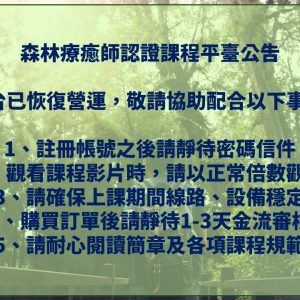- 2018.05.28
- 期刊文章
漫步於不同綠境對人體生理反應之影響:以脈搏、血壓與末梢血流量為指標
漫步於不同綠境對人體生理反應之影響:以脈搏、血壓與末梢血流量為指標
EFFECTS OF WALKING IN DIFFERENT GREEN ENVIRONMENTS ON PHYSIOLOGICAL RESPONSES: PULSE RATE, BLOOD PRESSURE AND PERIPHERAL BLOOD FLOW AS INDICATORS
作者
陳奐存、林一真、申永順、廖天賜
來源
中華林學季刊 ; 51卷3期 (2018 / 09 / 30) , P205 – 216
摘要
日常的工作壓力、不良生活習慣皆為引發文明病之根源,然而在眾多文明病中,又高血壓屬較為常見,雖然目前已有研究指出森林環境較都市環境具有降低高血壓的效益,但相較於國外之發展,目前在我國之相關研究仍為少數,此外,考慮到都市環境中的綠色元素亦對於人體健康具有效益,故本研究以森林及都市綠帶為試驗場域,並以都市街道作為對照,探討不同環境對於受試者4種心血管指標之影響。本研究以惠蓀林場、臺中美術園道、臺中火車站街區作為森林環境、都市綠帶、都市街道之代表場域,並招募30位學生作為受試者,其脈搏、收縮壓、舒張壓、末梢血流量等指標在步行於3試驗場域之前、後時段進行測量,以比較不同場域以及步行前後之差異。由結果顯示在森林環境中,受試者之脈搏數(pulse rate)及收縮壓(systolic blood pressure)顯著低於都市街道;此外,受試者之舒張壓(diastolic blood pressure)在步行完森林環境後顯著下降;在都市綠帶中,受試者之脈搏數及收縮壓都顯著低於都市街道者。本研究結果顯示漫步於森林環境在改善心跳、血壓功能上具有助益,亦為國人提出一改善身體健康可行之法。
Stresses and unsuitable habits may exert negative effects on health such as cardiovascular disease. In recent years, many reports showed that forest environment can improve human health and well-being. This study was conducted to investigate the human cardiovascular response under different environments. 30 students (college, Age=24.4±2.8) were recruited as human subjects for the study. The environments include forest and urban green space as experimental sites, and urban street as the control. Four cardiovascular parameters were measured for each subject before and after walking through all three experimental sites. Cardiovascular responses of the subjects were compared among three experimental sites, as well as before and after walking. The results showed that pulse rate and systolic blood pressure of the subjects in the forest environment and urban green space are significantly lower than in the urban street. The results of this study showed similar trends as several previous studies that forest environment has beneficial effect to human cardiovascular system, and urban green space can be used for forest therapy.
本網站僅整理臺灣森林療癒之期刊文章、論文、計畫報告摘要供參考
若需閱讀全文請逕至來源、主管機關索取資料


- Copyright © Forestry and Nature Conservation Angency
- 農業部林業及自然保育署 版權所有
- 電話:(02)2351-5441
- 地址:10050臺北市中正區杭州南路一段2號

- 台灣森林保健學會
- E-mail: twforesthealing@gmail.com
- 電話:(02)3366-4637
- 地址:10617台北市大安區羅斯福路四段1號 森林系館3F
- FB 台灣森林保健學會
Copyright © 2019 All Rights Reserved.





